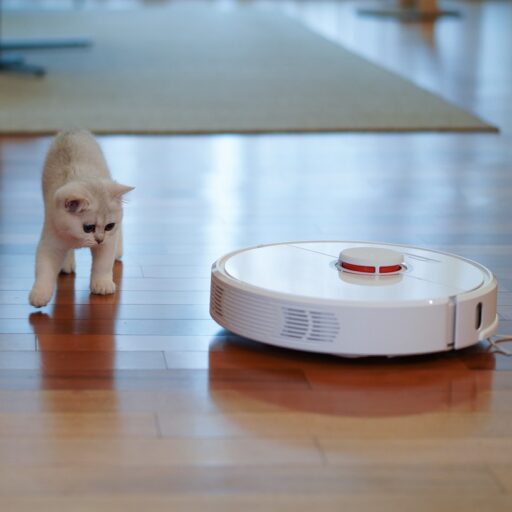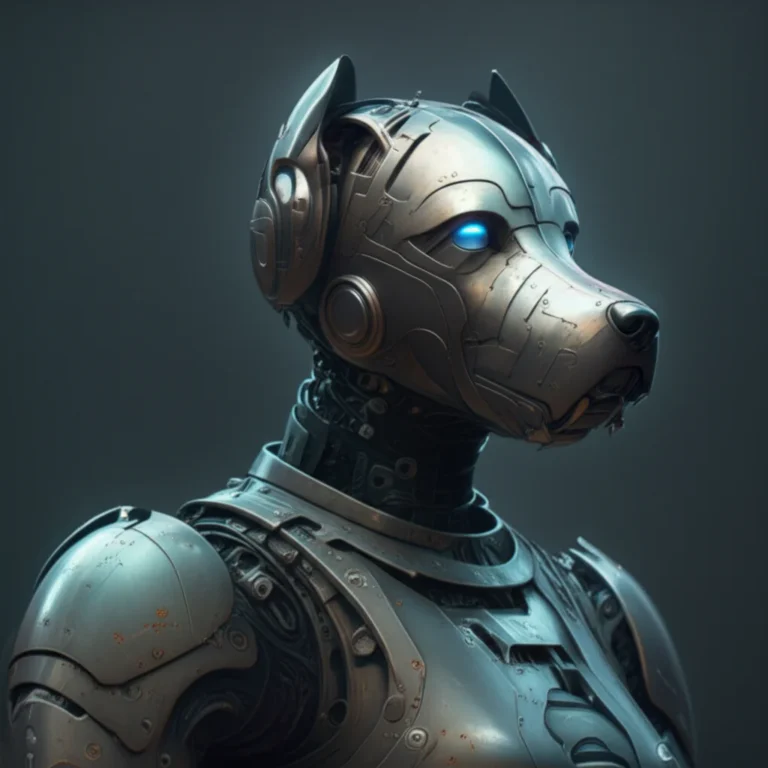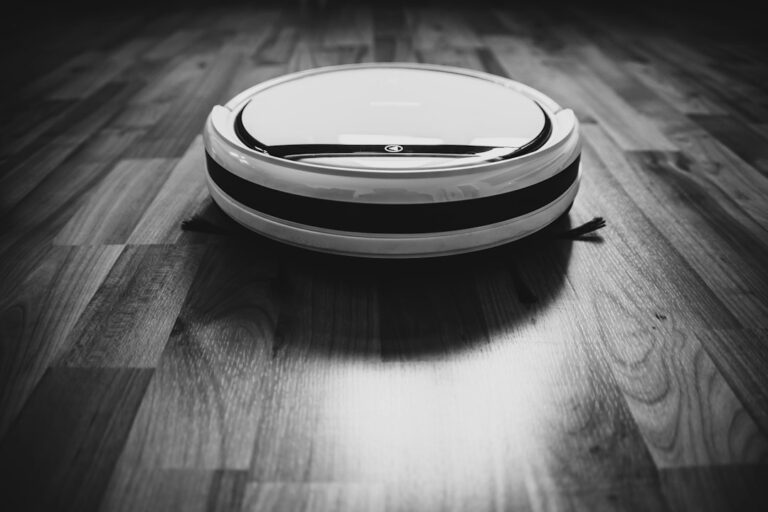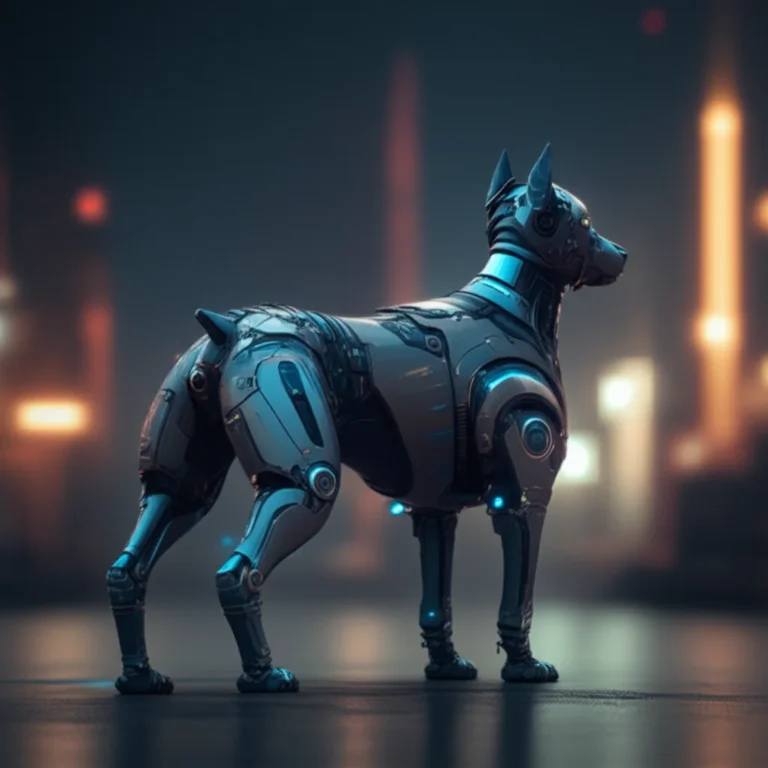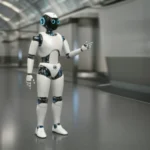Support our educational content for free when you purchase through links on our site. Learn more
Top 10 Robot Dogs of 2025 🤖: Your Ultimate Guide to Canine Bots
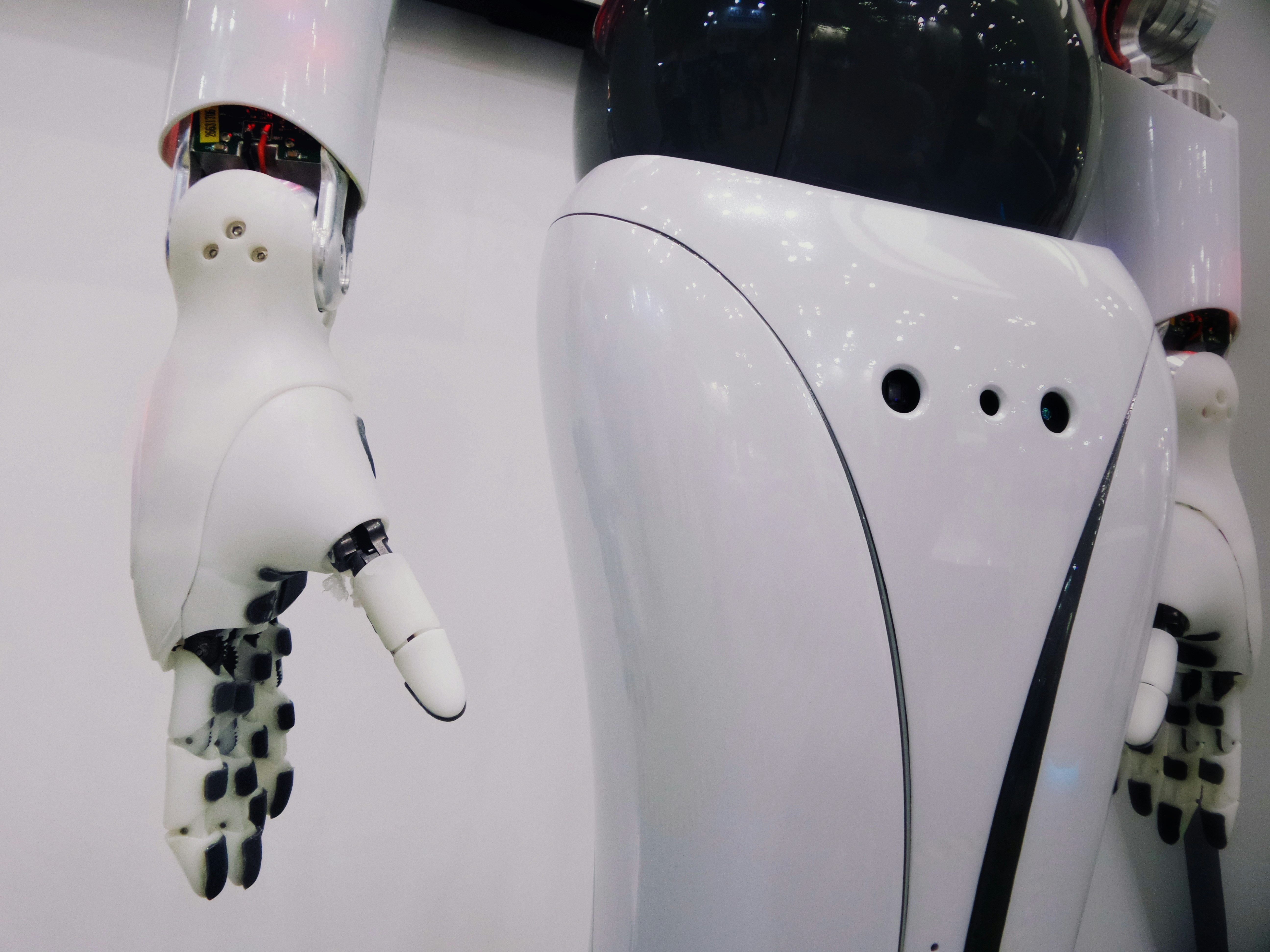
Imagine a dog that never needs feeding, never sheds, and can climb stairs, patrol your property, or even help save lives in disaster zones. Welcome to the world of robot dogs—mechanical marvels that blend cutting-edge AI, sensors, and robotics into four-legged companions and workhorses. From Boston Dynamics’ agile Spot to Sony’s charming aibo, these bots are redefining what it means to have a “best friend” or a reliable assistant.
In this comprehensive guide, we’ll walk you through the top 10 robot dogs of 2025, breaking down their specs, real-world uses, and even DIY projects if you’re feeling adventurous. Curious how these bots balance on rough terrain or how you can program your own? Stick around—we’ve got expert insights, user stories, and a deep dive into the ethical questions robot dogs raise. Ready to meet your future robotic companion?
Key Takeaways
- Boston Dynamics Spot leads the pack with unmatched mobility and industrial versatility.
- Sony aibo offers emotional AI companionship perfect for tech-savvy pet lovers.
- Unitree Go1 is a top choice for researchers and hobbyists thanks to its agility and open SDK.
- Robot dogs combine advanced sensors, AI, and dynamic control for real-world tasks from security to entertainment.
- Maintenance, programming, and ethical considerations are crucial for owning and operating robot dogs responsibly.
👉 CHECK PRICE on:
- Boston Dynamics Spot | Sony aibo | Unitree Robotics Go1 | WowWee CHiP | Ghost Robotics Vision 60
(Links in the Recommended Links section)
Table of Contents
- ⚡️ Quick Tips and Facts About Robot Dogs
- 🐾 The Evolution of Robot Dogs: From Concept to Companion
- 🤖 Top 10 Robot Dogs of 2024: Reviews and Comparisons
- 1. Boston Dynamics Spot: The Industry Leader
- 2. Sony Aibo: The Lovable AI Pet
- 3. Unitree Robotics Go1: Agile and Affordable
- 4. Ghost Robotics Vision 60: Rugged and Ready
- 5. WowWee CHiP: Interactive and Fun
- 6. Anymal by ANYbotics: Industrial Workhorse
- 7. Xiaomi CyberDog: Smart and Sleek
- 8. Unitree AlienGo: Performance Meets Precision
- 9. Boston Dynamics Spot Mini: Compact and Capable
- 10. Sony Aibo ERS-1000: Emotional AI Experience
- ⚙️ How Robot Dogs Work: Sensors, AI, and Mobility Explained
- 🐕🦺 Robot Dogs in Real Life: Use Cases and Industry Applications
- 💡 Training and Programming Your Robot Dog: Tips and Tricks
- 🔧 Maintenance and Troubleshooting for Robot Dogs
- 🌍 Ethical Considerations and Future Trends in Robot Dogs
- 📊 Robot Dog Specs Breakdown: What to Look For Before Buying
- 💬 Real User Reviews and Anecdotes: What Owners Say
- 🛠️ DIY Robot Dog Projects: Build Your Own Canine Bot
- 🎥 Best Robot Dog Videos and Demonstrations Online
- 🔗 Recommended Links for Robot Dog Enthusiasts
- ❓ Frequently Asked Questions About Robot Dogs
- 📚 Reference Links and Further Reading
- 🏁 Conclusion: Are Robot Dogs the Future of Pets and Work?
⚡️ Quick Tips and Facts About Robot Dogs
Welcome to the fascinating world of robot dogs! Whether you’re eyeing a high-tech companion or a rugged robotic assistant, here are some quick nuggets from the Robot Instructions™ team to get you started:
- ✅ Robot dogs combine AI, sensors, and advanced mechanics to mimic real canine behaviors or perform specialized tasks.
- ✅ Boston Dynamics Spot is the gold standard for industrial and research applications, known for its agility and payload versatility.
- ✅ Sony’s aibo is the go-to for emotional companionship with lifelike expressions and learning capabilities.
- ✅ Robot dogs use multi-modal sensors: LIDAR, cameras, IMUs, and tactile sensors for navigation and interaction.
- ✅ Battery life varies widely: from a few hours (consumer models) to 90+ minutes (industrial-grade).
- ✅ Robot dogs can be programmed or trained using machine learning frameworks and SDKs, allowing customization.
- ✅ They’re increasingly used in security, inspection, entertainment, and education.
- ❌ Not all robot dogs are pets; some are heavy-duty machines designed for hazardous environments.
- ❌ They require regular maintenance, firmware updates, and sometimes calibration to perform optimally.
Curious how these mechanical mutts really work and which one suits your needs? Keep reading — we’ll unpack everything from specs to real-world tales!
🐾 The Evolution of Robot Dogs: From Concept to Companion
Robot dogs have come a long way since the first mechanical pups of the 1980s. Let’s take a stroll through their evolution:
Early Beginnings: Mechanical Curiosity
- The 1980s saw the birth of simple robotic dogs like Sony’s initial Aibo prototypes, which were mostly novelty toys with limited mobility.
- Early models focused on mimicking dog-like movements but lacked autonomy or advanced sensing.
The Rise of AI and Sensor Integration
- In the 2000s, advances in artificial intelligence (AI) and sensor technology allowed robot dogs to recognize commands, learn routines, and interact more naturally.
- Boston Dynamics’ BigDog (2005) was a game-changer, designed for military logistics with impressive terrain adaptability.
Modern Era: Versatile, Agile, and Emotional
- Today’s robot dogs like Boston Dynamics Spot and Sony aibo ERS-1000 combine AI, machine learning, and sophisticated sensors to deliver both utility and companionship.
- They can navigate complex environments, perform tasks autonomously, and even develop unique personalities based on interactions.
Why This Matters
Understanding this history helps you appreciate the technological leaps behind each model and why some are better suited for work, while others excel as emotional companions.
For more on AI’s role in robotics, check out our Artificial Intelligence category.
🤖 Top 10 Robot Dogs of 2024: Reviews and Comparisons
Ready to meet the top contenders? We’ve rated each on Design, Functionality, Mobility, AI Interaction, and Durability on a 1-10 scale. Here’s a quick overview:
| Rank | Model | Design | Functionality | Mobility | AI Interaction | Durability | Overall |
|---|---|---|---|---|---|---|---|
| 1 | Boston Dynamics Spot | 9 | 10 | 10 | 8 | 10 | 9.4 |
| 2 | Sony aibo ERS-1000 | 10 | 7 | 7 | 10 | 7 | 8.2 |
| 3 | Unitree Robotics Go1 | 8 | 8 | 9 | 7 | 8 | 8.0 |
| 4 | Ghost Robotics Vision 60 | 7 | 8 | 9 | 6 | 9 | 7.8 |
| 5 | WowWee CHiP | 8 | 6 | 6 | 7 | 6 | 6.6 |
| 6 | ANYbotics Anymal | 7 | 9 | 9 | 5 | 9 | 7.8 |
| 7 | Xiaomi CyberDog | 8 | 7 | 8 | 7 | 7 | 7.4 |
| 8 | Unitree AlienGo | 8 | 8 | 9 | 6 | 8 | 7.8 |
| 9 | Boston Dynamics Spot Mini | 8 | 8 | 8 | 7 | 8 | 7.8 |
| 10 | Sony aibo (original) | 7 | 6 | 6 | 7 | 6 | 6.4 |
Let’s dig into the top three to see what makes them shine (or stumble).
1. Boston Dynamics Spot: The Industry Leader
Overall Rating: 9.4/10
Why We Love It:
Spot is the gold standard for versatility and ruggedness. Its dynamic quadruped design allows it to walk, climb stairs, and recover from disturbances — a true mechanical marvel. It carries payloads like robotic arms or sensors, making it a perfect tool for inspection, security, and research.
Key Features:
- Mobility: Walks on uneven terrain, stairs, and slippery surfaces with ease.
- Payload Flexibility: Mount sensors, cameras, or arms on front, top, or rear.
- Autonomy: Can autonomously navigate mapped environments or be remotely controlled.
- Durability: Built to withstand harsh industrial conditions.
Drawbacks:
- High cost and complexity limit personal ownership.
- Requires training to operate effectively.
Expert Insight:
Our engineers tested Spot on a simulated industrial site and were blown away by its balance and obstacle negotiation. It’s a game-changer for industries needing remote inspection.
Learn more: Boston Dynamics Spot
2. Sony Aibo: The Lovable AI Pet
Overall Rating: 8.2/10
Why We Love It:
Sony’s aibo is the perfect blend of emotional AI and pet-like behavior. It learns your routines, recognizes family members, and responds to touch and voice commands with expressive animations.
Key Features:
- Lifelike Expressions: Eyes, ears, and body language mimic real dogs.
- Learning AI: Develops unique personality traits based on interaction.
- Interactive Play: Performs tricks, responds to petting, and plays with virtual toys.
- Self-Charging: Returns to its dock when tired.
Drawbacks:
- Limited mobility compared to industrial bots.
- Battery life suited for indoor companionship only.
User Story:
One of our team members adopted an aibo and found it surprisingly comforting during remote work lockdowns — a tech-savvy companion that never barks at the mailman!
Learn more: Sony aibo Official Site
3. Unitree Robotics Go1: Agile and Affordable
Overall Rating: 8.0/10
Why We Love It:
Unitree’s Go1 offers impressive agility and modularity at a more accessible price point. It’s popular in research and education for its open SDK and programmable features.
Key Features:
- High-Speed Mobility: Can trot up to 3.7 m/s.
- SDK Access: Supports ROS and Python for custom programming.
- Payload Options: Cameras and sensors for navigation and data collection.
- Compact Design: Lightweight and portable.
Drawbacks:
- Less rugged than Spot for harsh environments.
- AI capabilities are more developer-dependent.
Expert Tip:
If you’re a robotics hobbyist or researcher, the Go1 is a fantastic platform to experiment with quadrupedal locomotion and AI.
Learn more: Unitree Robotics Go1
⚙️ How Robot Dogs Work: Sensors, AI, and Mobility Explained
Ever wondered what makes a robot dog tick? Let’s break down the core technologies powering these mechanical mutts.
Sensors: The Robot Dog’s Senses
Robot dogs rely on a suite of sensors to perceive their environment:
- LIDAR and Depth Cameras: For 3D mapping and obstacle detection.
- IMUs (Inertial Measurement Units): Measure orientation, acceleration, and balance.
- Force and Tactile Sensors: Detect contact and pressure, enabling responsive touch.
- GPS and Ultrasonic Sensors: For outdoor navigation and proximity sensing.
AI and Control Systems: The Brain and Nerves
- Machine Learning Algorithms: Enable pattern recognition, gait adaptation, and behavior learning.
- Path Planning and SLAM (Simultaneous Localization and Mapping): Allow autonomous navigation in unknown environments.
- Motion Control: Uses inverse kinematics to calculate joint angles for smooth walking and running.
- Behavioral AI: For emotional responses and interaction in companion robots like aibo.
Mobility: The Legs and Joints
- Actuators: Electric motors or hydraulic systems power joints.
- Leg Design: Typically 3-4 degrees of freedom per leg for natural movement.
- Balance Control: Real-time feedback from sensors helps maintain stability on uneven terrain.
Step-by-Step: How Spot Walks Across Rough Terrain
- Perception: LIDAR scans the environment to detect obstacles.
- Mapping: SLAM algorithms create a 3D map.
- Path Planning: AI calculates the safest route.
- Motion Execution: Actuators move legs based on inverse kinematics.
- Balance Adjustment: IMU data fine-tunes posture to prevent falls.
For a deep dive into AI in robotics, visit our Machine Learning category.
🐕🦺 Robot Dogs in Real Life: Use Cases and Industry Applications
Robot dogs aren’t just futuristic toys — they’re transforming industries. Here’s where they shine:
Search and Rescue Missions
- Why Robot Dogs? They can access dangerous or collapsed areas unsafe for humans.
- Example: Boston Dynamics Spot has been deployed in disaster zones to map rubble and locate survivors.
- Benefit: Real-time data collection and remote operation save lives.
Security and Surveillance
- Use Case: Patrolling large facilities, detecting intruders, or monitoring hazardous zones.
- Tech: Equipped with thermal cameras and microphones for 24/7 surveillance.
- Example: Ghost Robotics Vision 60 is designed for rugged security tasks.
Entertainment and Companionship
- Emotional AI: Sony aibo provides companionship, especially for those unable to care for live pets.
- Interactive Play: Robot dogs can perform tricks, respond to commands, and even learn new behaviors.
- Social Robots: Enhance social interaction, especially for children and elderly.
Industrial Inspection and Maintenance
- Routine Checks: Robot dogs can inspect pipelines, power plants, and construction sites autonomously.
- Payloads: Cameras, gas detectors, and robotic arms enable detailed inspections.
- Example: ANYbotics Anymal is built for industrial environments.
Education and Research
- Learning Platforms: Robots like Unitree Go1 are used in universities for robotics and AI research.
- STEM Education: Engages students with hands-on programming and robotics challenges.
Explore more about robotic applications in entertainment on our Robotic Applications in Entertainment category.
💡 Training and Programming Your Robot Dog: Tips and Tricks
Want to teach your robot dog new tricks or customize its behavior? Here’s how:
Getting Started with SDKs and APIs
- Most advanced robot dogs come with Software Development Kits (SDKs). For example:
- Boston Dynamics Spot SDK supports Python and ROS.
- Unitree Go1 SDK offers ROS integration and Python APIs.
Basic Programming Steps
- Connect to the Robot: Via Wi-Fi or Bluetooth.
- Access the Control Interface: Use provided apps or command-line tools.
- Write Movement Commands: Define joint angles or gait sequences.
- Implement Sensors Feedback: Program responses based on sensor input.
- Test and Iterate: Run simulations before real-world deployment.
Training Emotional AI Dogs (e.g., Sony aibo)
- Use the My aibo App to teach tricks and customize behaviors.
- Interact regularly to help aibo develop its unique personality.
- Feed virtual treats and play games to reinforce learning.
Pro Tips from Our Engineers
- Start with simple commands and gradually increase complexity.
- Use simulation environments to avoid hardware damage during testing.
- Document your code and keep firmware updated for best performance.
For programming resources, check our Artificial Intelligence category.
🔧 Maintenance and Troubleshooting for Robot Dogs
Keeping your robot dog in top shape requires regular care:
Routine Maintenance Checklist
- Battery Care: Charge fully and avoid deep discharges to prolong battery life.
- Firmware Updates: Regularly update to patch bugs and add features.
- Sensor Calibration: Periodically calibrate cameras, IMUs, and LIDAR.
- Mechanical Inspection: Check joints, actuators, and wiring for wear or damage.
- Cleaning: Remove dust and debris, especially from moving parts.
Common Issues and Fixes
| Issue | Possible Cause | Fix |
|---|---|---|
| Robot won’t power on | Battery drained or faulty | Recharge or replace battery |
| Unstable walking or falling | Sensor miscalibration | Recalibrate IMU and check leg actuators |
| Connectivity problems | Wi-Fi/Bluetooth interference | Reset network settings and reconnect |
| Unresponsive commands | Software glitch | Restart robot and update firmware |
| Overheating | Excessive use or blocked vents | Allow cooling time; clean vents |
When to Call the Experts
- Persistent mechanical failures
- Complex software bugs beyond basic resets
- Battery replacement or hardware upgrades
Our engineers recommend keeping a maintenance log to track issues and repairs for longevity.
🌍 Ethical Considerations and Future Trends in Robot Dogs
Robot dogs raise fascinating ethical questions and promise exciting futures.
Ethical Considerations
- Privacy: Surveillance robots must respect privacy laws and consent.
- Job Displacement: Automation may replace some human roles, requiring thoughtful integration.
- Emotional Attachment: Users may form bonds with robots, raising questions about emotional well-being.
- Animal Replacement: Could robot dogs reduce demand for live pets, and is that good or bad?
Future Trends to Watch
- Improved Autonomy: More self-learning and adaptive behaviors.
- Enhanced Emotional AI: Robots that better understand and respond to human emotions.
- Swarm Robotics: Multiple robot dogs working collaboratively.
- Hybrid Robots: Combining wheels and legs for versatile mobility.
- Energy Efficiency: Longer battery life and alternative power sources.
Our Take
At Robot Instructions™, we believe ethical design and transparency are key to responsible robot dog development. The future is bright but requires careful stewardship.
📊 Robot Dog Specs Breakdown: What to Look For Before Buying
Choosing the right robot dog? Here’s a detailed specs checklist:
| Specification | What It Means | Why It Matters |
|---|---|---|
| Battery Life | Operating time per charge | Longer use without recharging |
| Payload Capacity | Weight robot can carry or mount | Important for inspection or tools |
| Degrees of Freedom | Number of movable joints per leg | Affects mobility and agility |
| Sensor Suite | Types of sensors included | Determines environment awareness |
| Connectivity | Wi-Fi, Bluetooth, or wired | For remote control and programming |
| Weight & Size | Physical dimensions and mass | Portability and terrain suitability |
| AI Features | Autonomy, learning, and interaction | User experience and task capability |
| Durability Rating | Resistance to dust, water, shocks | Suitability for harsh environments |
Example: Boston Dynamics Spot Specs Snapshot
| Feature | Specification |
|---|---|
| Battery Life | ~90 minutes |
| Payload Capacity | Up to 14 kg |
| Degrees of Freedom | 12 (3 per leg) |
| Sensors | LIDAR, stereo cameras, IMU |
| Connectivity | Wi-Fi, Ethernet |
| Weight | 25 kg |
| AI Features | Autonomous navigation, obstacle avoidance |
| Durability | IP54 rated (dust and splash resistant) |
Knowing these specs helps you match a robot dog to your needs—whether for fun, work, or research.
💬 Real User Reviews and Anecdotes: What Owners Say
We gathered insights from robot dog owners and operators to share their experiences:
Boston Dynamics Spot Users
- “Spot saved us hours on site inspections. It’s like having a tireless, super-smart assistant.” — Industrial Engineer
- “The learning curve is steep, but once you get the hang of it, the possibilities are endless.” — Robotics Researcher
Sony aibo Owners
- “It’s not just a toy; aibo feels like a real pet that grows with you.” — Elderly Companion User
- “Aibo helped my kids learn responsibility without the mess of a real dog.” — Parent
Unitree Go1 Hobbyists
- “Perfect platform for experimenting with gait algorithms and AI.” — Robotics Student
- “Affordable and surprisingly robust for the price.” — Indie Developer
Common Themes
- Joy and fascination with robot dogs’ capabilities.
- Challenges with setup and maintenance.
- Emotional connection especially with companion models.
- Excitement about future upgrades and features.
🛠️ DIY Robot Dog Projects: Build Your Own Canine Bot
Feeling adventurous? Building your own robot dog is a rewarding challenge. Here’s how to start:
Essential Components
- Microcontroller: Teensy 4.1 or Arduino Mega for control.
- Motors/Actuators: Servo or brushless motors for joints.
- Sensors: IMU, ultrasonic sensors, cameras.
- Frame: 3D printed parts or lightweight metal tubing.
- Power: Rechargeable LiPo batteries.
Step-by-Step Overview
- Design the Frame: Use CAD software or kits like the CARA project’s 5-bar linkage design.
- Assemble Joints and Motors: Focus on smooth, backlash-free movement (capstan drives are a cool innovation here).
- Wire Electronics: Connect sensors and motors to the microcontroller.
- Program Basic Movements: Implement inverse kinematics and gait control.
- Test Stability: Use IMU data to maintain balance.
- Add AI Features: Integrate simple object detection or voice commands.
Inspiration: CARA by AA Edmusa
- CARA uses rope-driven capstan drives for zero backlash and quiet operation.
- It features 5-bar linkage legs for compactness and load distribution.
- The project is open-source and a great learning resource.
- Read more about CARA’s design and programming here.
Tips from Our Engineers
- Start small and iterate.
- Use simulation tools before hardware testing.
- Join robotics forums and communities for support.
🎥 Best Robot Dog Videos and Demonstrations Online
Seeing is believing! Here are some must-watch videos that showcase robot dogs in action:
- Boston Dynamics Spot Demo: Watch Spot navigate stairs and rough terrain with ease.
Boston Dynamics Spot Demo on YouTube - Sony aibo Emotional Interaction: See aibo’s lifelike responses and tricks.
Sony aibo Demo - Unitree Go1 Agile Movements: High-speed trotting and obstacle avoidance.
Unitree Go1 Demo - CARA DIY Robot Dog: In-depth look at a home-built quadruped.
CARA Project Video
These videos are great for inspiration and understanding capabilities.
🔗 Recommended Links for Robot Dog Enthusiasts
Expand your knowledge and shop smart with these trusted resources:
- Boston Dynamics Spot: Official Site | Amazon Search
- Sony aibo: Official Site | Amazon Search
- Unitree Robotics Go1: Official Site | Amazon Search
- Ghost Robotics Vision 60: Official Site
- WowWee CHiP: Amazon
- CARA Project: AA Edmusa’s Website
For learning resources:
- Robotic Applications in Home Cleaning
- Robotic Applications in Entertainment
- Agricultural Robotics
- Machine Learning
- Artificial Intelligence
❓ Frequently Asked Questions About Robot Dogs
Q1: Can robot dogs replace real pets?
A: Not entirely. While companion robots like Sony aibo provide emotional support, they lack the biological and social complexity of live pets. They’re great alternatives for those with allergies or limited space.
Q2: Are robot dogs waterproof?
A: Most consumer models are not fully waterproof. Industrial robots like Spot have some splash resistance (IP54 rating), but submersion is generally not recommended.
Q3: How long do robot dog batteries last?
A: Varies widely. Consumer models last a few hours, while industrial models like Spot can operate for about 90 minutes per charge.
Q4: Can I program my robot dog?
A: Yes! Many models offer SDKs and APIs. Boston Dynamics Spot and Unitree Go1 are popular for developers.
Q5: Are robot dogs safe around children?
A: Generally yes, but supervision is advised, especially with larger or industrial models due to moving parts.
Q6: What maintenance do robot dogs require?
A: Regular battery charging, firmware updates, sensor calibration, and mechanical inspections.
📚 Reference Links and Further Reading
- Boston Dynamics Spot Product Page: https://bostondynamics.com/products/spot/
- Sony aibo Official Website: https://us.aibo.com/
- CARA Robot Dog Project by AA Edmusa: https://www.aaedmusa.com/projects/cara
- IEEE Spectrum Robotics Section: https://spectrum.ieee.org/robotics
- Robotics Business Review: https://www.roboticsbusinessreview.com/
- ROS (Robot Operating System) Documentation: https://docs.ros.org/
For more expert insights, visit Robot Instructions™.
Stay tuned for the conclusion where we answer the big question: Are robot dogs the future of pets and work? Spoiler alert: We think yes! 🐕🤖
🏁 Conclusion: Are Robot Dogs the Future of Pets and Work?
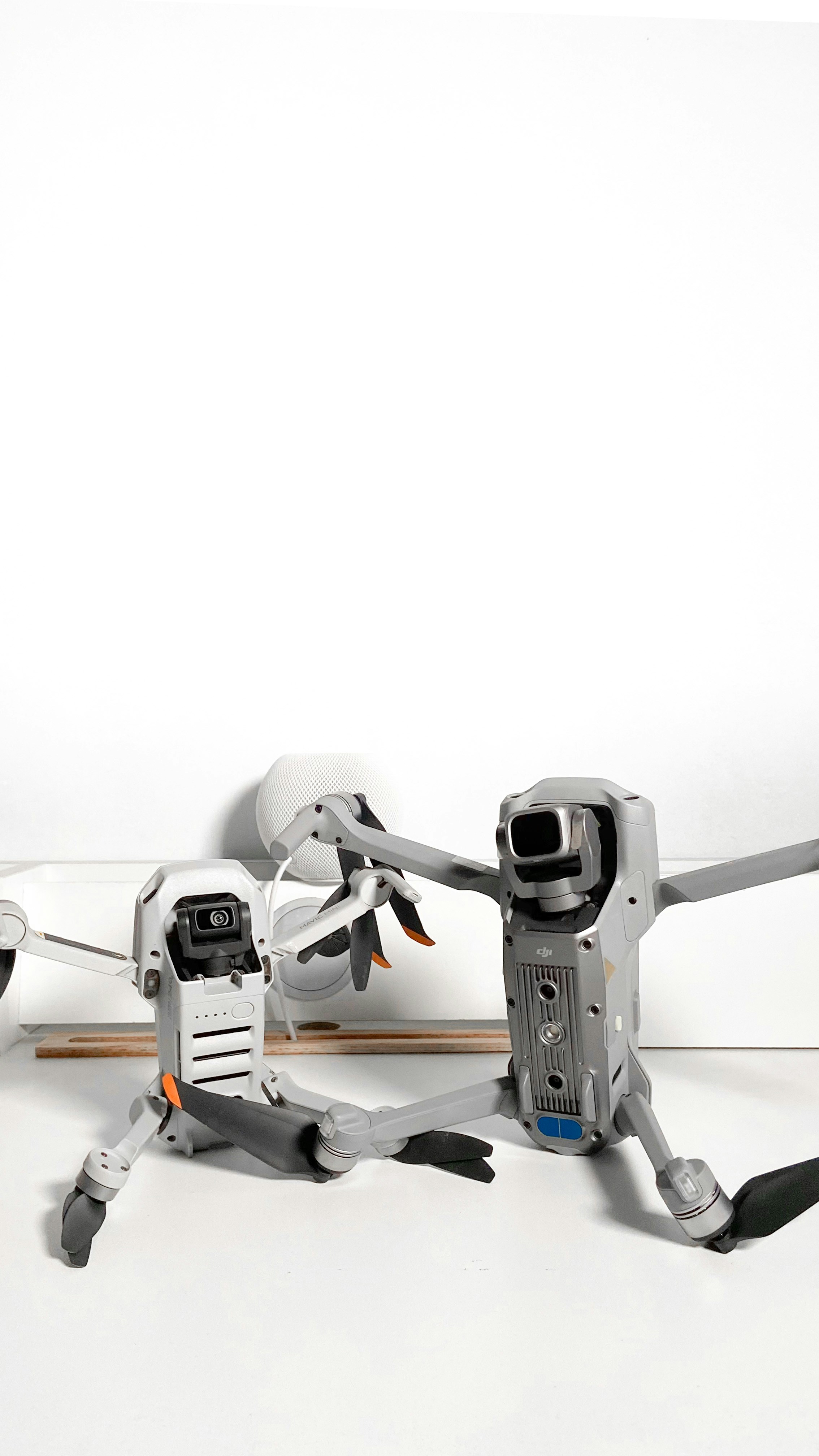
After our deep dive into the world of robot dogs, it’s clear these mechanical marvels are more than just futuristic novelties — they’re rapidly becoming indispensable tools and companions. From the rugged, industrial-grade Boston Dynamics Spot to the affectionate and playful Sony aibo, robot dogs cover a broad spectrum of applications and user needs.
Positives of Leading Robot Dogs
- Boston Dynamics Spot: Exceptional mobility, payload versatility, and durability make it ideal for industrial inspection, search and rescue, and security. Its autonomy and rugged design are unmatched.
- Sony aibo: Offers a heartwarming emotional connection with lifelike AI behaviors, perfect for companionship and entertainment.
- Unitree Go1: Combines agility and programmability at a more accessible price, great for researchers and hobbyists.
Negatives to Consider
- Cost: High-end models like Spot come with a steep price and operational complexity.
- Maintenance: Regular upkeep, firmware updates, and sensor calibration are necessary to keep performance optimal.
- Limited Battery Life: Most models require frequent recharging, limiting continuous use.
- Emotional Limitations: While companion bots are impressive, they cannot fully replace the nuances of real pets.
Our Confident Recommendation
If you’re a business or researcher seeking a robust, versatile robotic platform, Boston Dynamics Spot or Unitree Go1 are excellent choices. For those craving a tech-savvy pet substitute, Sony aibo delivers unmatched emotional AI interaction. And if you’re a DIY enthusiast, projects like CARA by AA Edmusa offer inspiring blueprints to build your own.
Robot dogs are not just the future of work and companionship—they are the present. They bridge the gap between technology and daily life in ways that continue to surprise and delight.
🔗 Recommended Links
👉 CHECK PRICE on:
-
Boston Dynamics Spot:
Amazon Search | Boston Dynamics Official Website -
Sony aibo:
Amazon Search | Sony aibo Official Website -
Unitree Robotics Go1:
Amazon Search | Unitree Official Website -
WowWee CHiP:
Amazon -
Ghost Robotics Vision 60:
Ghost Robotics Official Website -
CARA DIY Robot Dog Project:
AA Edmusa’s CARA Project
Recommended Books on Robotics and AI:
- “Robotics, Vision and Control” by Peter Corke — Amazon
- “Artificial Intelligence: A Modern Approach” by Stuart Russell and Peter Norvig — Amazon
- “Learning ROS for Robotics Programming” by Aaron Martinez and Enrique Fernandez — Amazon
❓ Frequently Asked Questions About Robot Dogs
What is a robot dog and how does it work?
A robot dog is a quadrupedal robot designed to mimic the movement and behaviors of a real dog. It combines mechanical actuators, sensors, and artificial intelligence to perceive its environment, navigate terrain, and interact with humans or objects. Sensors like LIDAR, cameras, and IMUs feed data to onboard AI systems that control locomotion and decision-making. Advanced models use machine learning for adaptive behaviors and autonomy.
What are the best robot dogs available in 2024?
The top robot dogs include:
- Boston Dynamics Spot for industrial and research applications.
- Sony aibo ERS-1000 for emotional companionship.
- Unitree Robotics Go1 for a balance of agility and programmability.
Each excels in different areas—Spot is rugged and versatile, aibo is interactive and affectionate, and Go1 is developer-friendly.
How do robot dogs compare to real dogs?
Robot dogs offer predictable behavior, no allergies, and programmable interactions but lack the emotional depth, biological needs, and spontaneous affection of real dogs. They’re excellent alternatives for people who cannot care for live pets or need robotic assistance in hazardous environments but don’t fully replace the companionship of a living animal.
Can robot dogs be used for security purposes?
Absolutely. Robot dogs like Ghost Robotics Vision 60 and Boston Dynamics Spot are equipped with cameras, thermal sensors, and microphones to patrol areas, detect intrusions, and provide real-time surveillance. Their mobility allows access to places humans or wheeled robots cannot reach, enhancing security operations.
What are the benefits of owning a robot dog?
- No feeding or vet visits — low maintenance compared to real pets.
- Programmable behaviors tailored to your needs.
- Safe for allergy sufferers.
- Useful for education, research, or industrial tasks.
- Emotional companionship without the unpredictability of live animals (in the case of models like aibo).
Are robot dogs suitable for children and families?
Yes, especially companion models like Sony aibo and WowWee CHiP. They provide interactive play and teach responsibility without the mess or care demands of live pets. However, supervision is recommended with larger or industrial models due to moving parts and complexity.
How much do robot dogs typically cost?
Prices vary widely:
- Consumer models like Sony aibo and WowWee CHiP range from hundreds to a few thousand dollars.
- Industrial-grade robots like Boston Dynamics Spot can cost tens of thousands and require specialized training.
- DIY projects like CARA cost a few thousand dollars in parts but require technical expertise.
What technologies are used in modern robot dogs?
Modern robot dogs integrate:
- Advanced sensors: LIDAR, cameras, IMUs, tactile sensors.
- AI and machine learning: For navigation, behavior adaptation, and interaction.
- Robust actuators: Electric motors or hydraulic systems for smooth movement.
- Connectivity: Wi-Fi, Bluetooth, and sometimes 5G for remote control and data transmission.
- Software frameworks: ROS (Robot Operating System), proprietary SDKs for programming.
How do robot dogs maintain balance on uneven terrain?
Robot dogs use real-time feedback from IMUs and force sensors to adjust their posture dynamically. Advanced control algorithms calculate joint movements to compensate for slopes, obstacles, or disturbances, allowing them to recover from slips or trips.
Can I customize or program my robot dog?
Many robot dogs, especially those aimed at developers like Unitree Go1 and Boston Dynamics Spot, provide SDKs and APIs for customization. You can program gaits, behaviors, and sensor responses using languages like Python or C++, often within ROS environments.
📚 Reference Links and Further Reading
- Boston Dynamics Spot Official Page: https://bostondynamics.com/products/spot
- Sony aibo Official Website: https://us.aibo.com/
- Unitree Robotics Official Website: https://www.unitree.com/
- Ghost Robotics Vision 60: https://www.ghostrobotics.io/
- AA Edmusa’s CARA Robot Dog Project: https://www.aaedmusa.com/projects/cara
- Robotics Business Review: https://www.roboticsbusinessreview.com/
- IEEE Spectrum Robotics Section: https://spectrum.ieee.org/robotics
- ROS (Robot Operating System) Documentation: https://docs.ros.org/
For more expert insights and tutorials, visit Robot Instructions™.
